18 Engaging Indoor Activities for Kids with Physical Disabilities
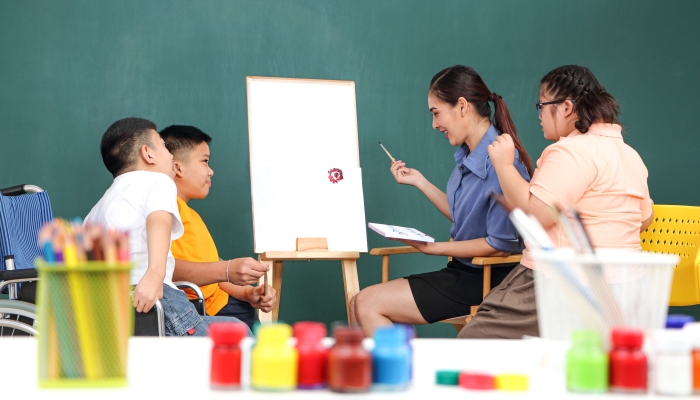
This post may contain affiliate links; please see our terms of use for details.
- There are lots of fun activities you can try to keep your child entertained indoors. Some activities may need to be modified to ensure your child is comfortable and happy while taking part.
- Trying out new activities will keep your child entertained, teach them new skills, and allow you to find more ways to enjoy spending time together.
- Virtual technology and online meetups have made social interactions easier than ever. You can help your child connect with their peers without having to leave the comfort of your own home.
There are so many different ways you can spend time indoors, from reading books to playing board games, building with Lego, and playing with slime. Indoor activities include active games, sensory stimulation, imaginative play, and educational activities.
When it comes to indoor activities for kids with disabilities, you can never have too many ideas. A Pinterest board filled with potential activities is perfect for a rainy day. Doing the same activity repeatedly can grow tiring, but simple modifications can freshen up the activity and make it feel brand new.
Including educational indoor activities as part of your child’s daily routine gives your child plenty of opportunity for play and learning. Your child’s comfort is key, so ensure you make any necessary modifications to keep your child comfortable.
Sensory Activities
Sensory activities are a brilliant way to kill time indoors. If you have a sensory-seeking child, these activities might be your go-to on a rainy day. If your child is sensory-avoidant, you may want to make modifications to make the activity suitable for your child.
Tactile Activities
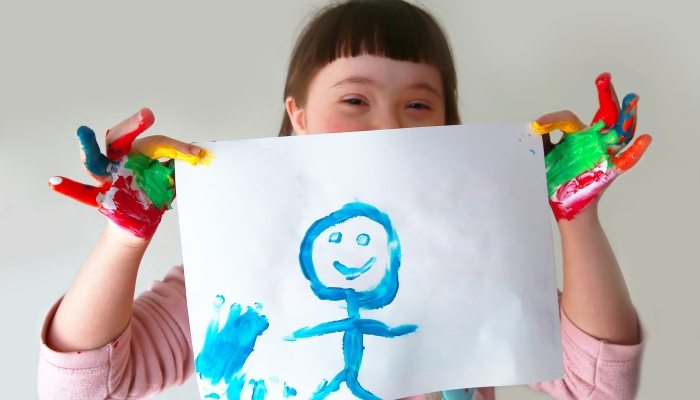
- Finger painting: Finger paint is a fantastic, albeit messy, indoor activity for children with disabilities. All you need is some blank paper (or canvas or cardboard box), finger paints, and to accept that things are about to get messy. Opt for non-toxic finger paints to ensure a stress-free playtime (or finger paint with pudding if your child tends to put things in their mouths). Follow this activity with a bath, and you have another sensory play experience in the bag.
- Foil blanket play mat: Set up a foil emergency blanket on the floor and situate your child’s favorite toys on the blanket. The feel and sound of the blanket will provide a sensory experience. Include toys with a mix of different textures to increase the sensory stimulation provided by this activity.
Auditory Activities
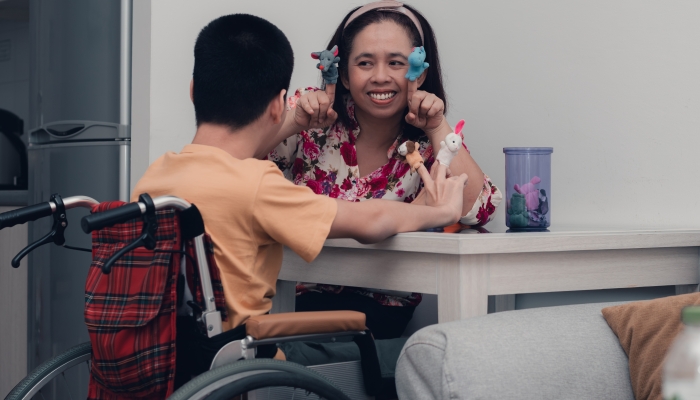
Auditory activities can be a good way of letting off energy or calming down, depending on the chosen activity.
- Body Percussion: Teach your child to use their body as an instrument and see how many sounds they can come up with. Clapping, finger clicking, stamping, and whistling are all fun ways to make noise with your body. See if you can create a tune together using your bodies as instruments.
- Interactive storytelling: Sharing a story is a lovely bonding activity, and it’s perfect for calming down at the end of the day. Add relevant props, silly sound effects, and theatrical flair to your performance to make your story more interactive. A good story box can also be a fun and calming activity.
Educational Activities
All play counts as educational, and you can engage your child with plenty of educational activities at home.
Interactive Learning Games
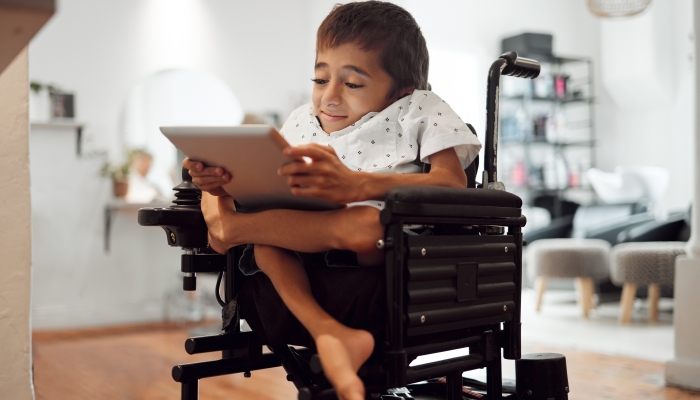
- Educational apps: There are many educational apps specifically designed for children with disabilities. Crazy Gears is an award-winning educational app to aid your child’s critical thinking skills. The app has a special mode for children with Cortical Visual Impairment with easy-to-see color schemes.
- Board games: Card games and board games are a wholesome way to spend time indoors, and many are suitable for children with disabilities. You must consider which board games will be best for your child. Pop The Pig is a fun game for teaching numbers, colors, counting, and turn-taking. Thought Spot’s Play & Learn is a fun game to learn colors, numbers, emotions, letters, and language skills.
- The same Pop the Pig you know and love but now BIGGER and BETTER!
- Top-selling preschool game with over 200 million views on YouTube
- Players take turns rolling the die, feeding the pig, and pushing down on his head
- Each pump makes his belly grow bigger, bigger, and bigger until… POP!
- Engaging Learning Experience: Provides toddlers with an exciting way to learn colors, numbers, moods/emotions, letters, and language skills through interactive play with a soft and cuddly cube.
- Fun Game Format: Roll the cube and pick a card matching the color you land on, making learning an enjoyable game for children while enhancing their cognitive development.
- Comprehensive Learning: Covers a wide range of educational concepts, including colors, numbers, moods/emotions, letters, and language skills, offering a holistic learning experience for young learners.
- Emotional Intelligence Development: Helps children understand and express their emotions by incorporating mood and emotion cards, fostering emotional intelligence and social awareness from an early age.
Creative Writing
- Storytelling: Writing stories is a fun way to engage the mind, unleash creativity, and wile away the hours. Story Cubes are a great story prompt for kickstarting the imagination. There are many options for assistive technology for writing, such as slant boards, pen grips, and digital aids. Storywriting is a great way to develop many skills, including vocabulary development, letter formation, imaginative thinking, and fine motor skills.
- INSPIRE IMAGINATION: Unleash boundless creativity by combining items, characters, places, and animals to craft and share unique tales.
- ECO-FRIENDLY PACKAGING: Now in eco-conceived packaging without plastic, housed in a tin box for sustainable storytelling adventures.
- PORTABLE ENTERTAINMENT: Perfect for storytelling on the go – ideal for travel, school, camping, and restaurant waiting.
- MIX AND MATCH: Compatible with other themes, these cubes offer endless storytelling possibilities.
Physical Activities
When you think of exercise, you’re likely imagining an outdoor sport, but it’s absolutely possible to exercise indoors. Exercise is good for developing gross motor skills, burning off energy, improving balance, and helping with hand-eye coordination.
Gentle Indoor Exercise
Movement can be an ideal sensory break for children with sensory processing issues. For special needs children, physical activity can relieve stress, release feel-good hormones, and boost energy.
- Exercise videos: There are many exercise workout videos for children with disabilities on YouTube. This seated workout for kids is excellent for wheelchair users and children with other mobility issues. Adaptive yoga is another fun way to move your body at home; this informative video teaches some adapted poses to ensure yoga is accessible to all.
- Kitchen disco: A kitchen disco is an easy, silly way to move your body and burn off some energy with disabled children. Simply stick your child’s favorite song on and join them in a kitchen boogie. Why not come up with a dance routine together?
Modified Movement Games
You can play many modified movement games with children with special needs, but most will probably require more space than you have in your home. There are, however, some small-scale modified movement games you can try at home.
- ENGAGING OUTDOOR PLAY: Gather the family and head outside! Boley’s Kids Bowling Set ensures hours of active play with 10 vibrantly colored pins and 2 easy-to-hold bowling balls. Perfect for garden games or any outdoor setting!
- COSMIC FUN FOR EVERYONE: Just the right size for little hands but challenging enough to entertain the entire family. Turn any summer afternoon into a competitive bowling league right in your backyard or playroom.
- BOOST MOTOR SKILLS: This set isn’t just for fun; it’s educational too! Bowling helps children develop hand-eye coordination, balance, and fine motor skills, making it a great addition to any playdate or preschool activity.
- SAFE AND CHILD FRIENDLY: At Boley, child safety is our highest priority. That’s why our entire production process is rigorously monitored by the most reputable organizations of child safety standards, including ASTM, Sedex, ICTI Care, and more.
- Indoor bowling: Indoor bowling with lightweight pins is a fun activity for children with special needs to try at home. If your child struggles to hit the pins, use a bigger ball. A ball that makes sound when it rolls is ideal for kids who are visually impaired.
- Balloon volleyball: Play bat the balloon with your child. See how long you can keep it in the air. Play indoor volleyball by batting the balloons across the room to each other. Why not use couch pillows as a net to make it feel like a real volleyball game?
Artistic Activities
Art is a top-tier rainy-day activity, perfect for staying indoors for long periods. There are so many artistic mediums to explore and different artists to feel inspired by that you’re unlikely to run out of art projects.
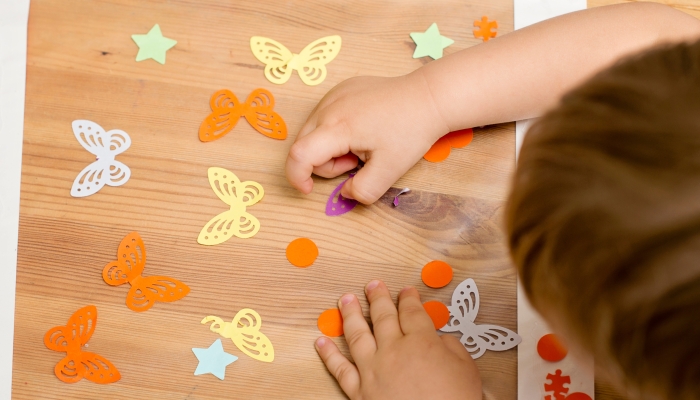
Painting and Drawing
- Adaptive arts and crafts: There are many adaptive art tools to ensure everybody can express themselves through art. From adaptive pencil grips to wheelchair painting, you can modify the art activity so your child can participate. It may take a while to figure out which adaptive tools work best for your child, so don’t be afraid to experiment and try new techniques. Art activities are a fun way to develop fine motor skills.
Music and Rhythm Activities
- Adaptive instruments: If your child uses a switch, there are adaptive musical instruments that can connect to your child’s switch. Your child can play the instrument, make music, and have fun with an adaptive musical instrument.
- Digital music creation apps: If your child is tech-savvy, why not introduce them to a digital music-making app? There are lots to choose from, though Garage Band is probably one of the better-known apps. With an app, your child can compose their own music and create songs.
Social Interaction and Team Activities
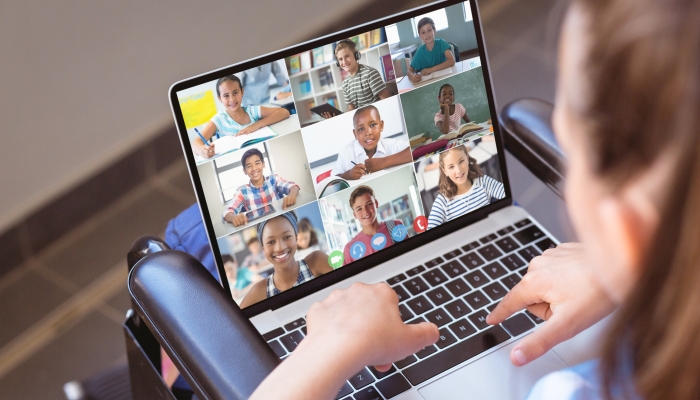
Socializing Online
- Virtual playdates: Online groups are a fantastic way to give your child social experiences without leaving the house. Reach out to local organizations and online support groups to see if there are any virtual activities that may work for your child.
- Online group activities: It may help to have activities or games to enjoy together during the video call. For example, the children could all make the same Lego set or work on an art piece during the chat. Sometimes, a distraction to keep everybody occupied can help a virtual meetup run smoothly.
Collaborative Projects and Team-building Exercises
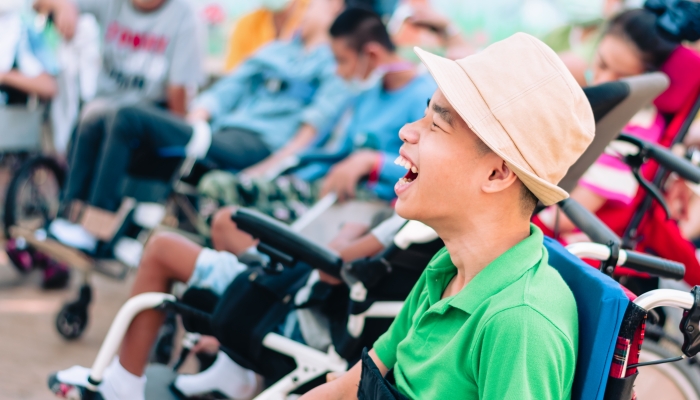
Being at home doesn’t have to mean being cut off from society. Thanks to advancing technologies, children can participate in virtual collaboration projects and meet-ups.
- Group art projects: Group art projects are always fun, so why not organize a virtual one? Choose a theme and have each participant work on their piece. Once everybody is finished, hold a virtual meet-up so participants can showcase and explain their work to the rest of the team. An easy art project is a word banner where each child decorates a letter and then mails it to you so you can put the banner together.
- Team puzzle-solving activities: Escape rooms are growing in popularity, and it’s not hard to see why. Why not organize a virtual escape room for your child and their friends? Collaborate with the other parents to ensure each child has physical clues to engage with, though ensure the children work collaboratively to solve the puzzle. The social and communication skills necessary for this will benefit your child’s adaptive skills for independent living.
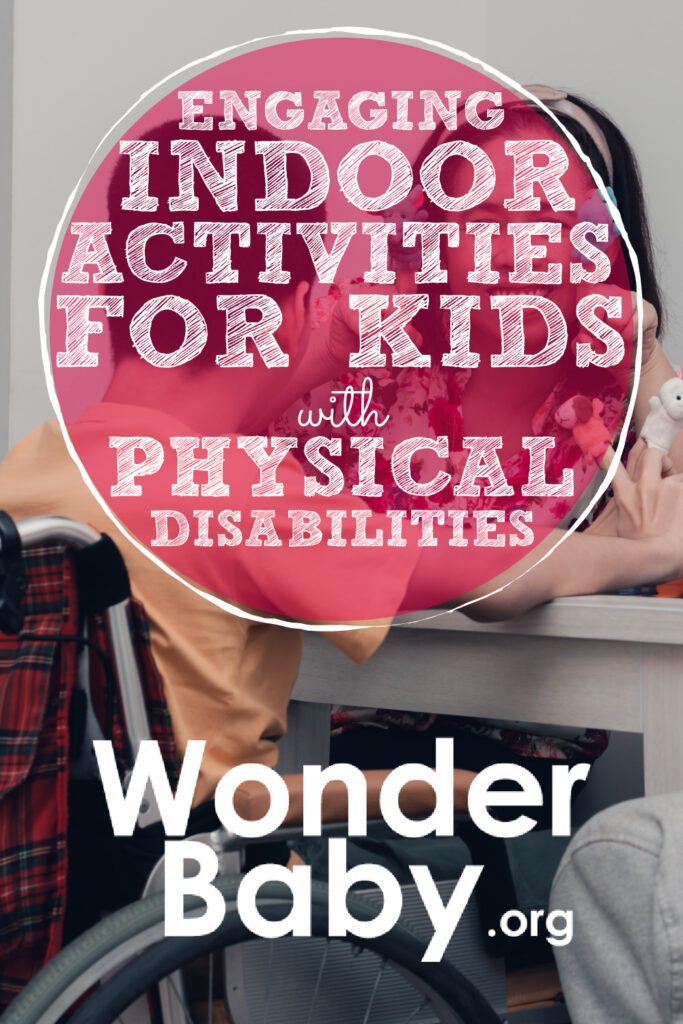
Related Posts

Eye Conditions and Syndromes, Visual Impairment
Neuralink Announces Plans to Restore Sight to the Blind with Brain Chip
Elon Musk’s company Neuralink has announced plans to begin human trials of its new “Blindsight” brain chip by the end of 2025.

Special Needs
5 Spring Cleaning Tips for Families of Children with Disabilities
Spring cleaning is an opportunity to create a more accessible, organized, and supportive space for your child with disabilities. Declutter, deep clean, and refresh!

Visual Impairment
The Gift of Understanding: How a Young Child Helps His Blind Father Navigate Life
When a parent is blind, it’s natural for people to wonder how their sighted child will adapt. Will they struggle to understand their parent’s needs? Will they feel burdened by...



